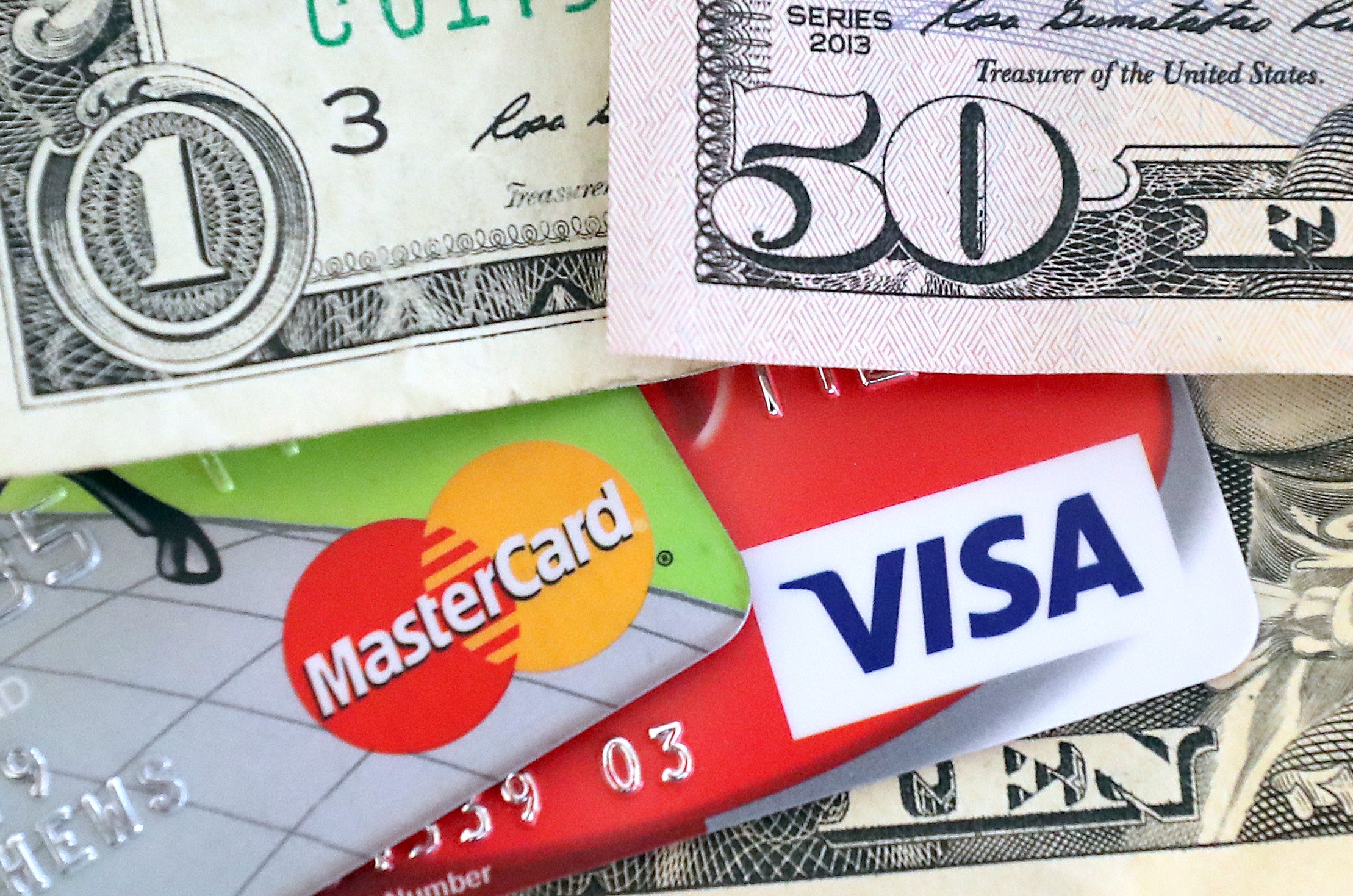HOSTED BY: 1 AIR TRAVEL
Cash-back credit cards offer cash rewards on the purchases you make. Many come with other perks and features that can save you money on your monthly statement or on interest charges. Some even provide some purchase and travel protections, too.
For more TPG news delivered each morning to your inbox, sign up for TPG daily newsletter.
But with so many different options out there, it’s possible that you’re not using the best card or strategy to maximize the value you can get from your cash-back card.
Here are some common mistakes people make with cash-back credit cards — and how to avoid them.
In This Post
You’re not using the right credit card for your spending
Cash-back rewards programs come in all shapes and sizes, and if you didn’t spend a lot of time researching various options, you might be leaving real money on the table by using the wrong card.
Even if you did do your homework before you found your current card, it’s possible that your spending habits or preferences have changed.
Take a look at your budget and where you spend most of your money (i.e. gas, groceries, dining, etc.). Determine how well your current card aligns with your habits. Then, take some time to research other cards that might provide more cash back based on your top expense categories.
For example, if you spend a lot on groceries and want a card with no annual (see rates and fees), the Blue Cash Everyday® Card from American Express offers 3% cash back on up to $6,000 spent each calendar year at U.S. supermarkets (then 1%), 2% back at U.S. gas stations and select U.S. department stores, and 1% back on everything else.
If you spend a lot in different areas of your budget and want some more flexibility, the Bank of America® Customized Cash Rewards credit card could be a good fit. It offers 3% cash back on the category of your choice from the following options: gas, online shopping, dining, travel, drug stores and home improvement and furnishings. The card also offers 2% back at grocery stores and wholesale clubs and 1% back on everything else. The only caveat is that there’s a $2,500 combined spending limit on the 3% and 2% categories each quarter, after which you’ll earn just 1% back.
Finally, if you’d rather just earn a high rewards rate on everything, the Citi® Double Cash Card might be the ticket. The card offers 2% cash back on everything – 1% back when you make a purchase and another 1% back as you pay it off.

Managing more than one card can be challenging, but it can also be more rewarding. (Photo by Andrew Matthews/PA Images/Getty Images)
You’re only using one card
Sticking with just one credit card makes things a lot simpler, but even if your card’s rewards program hits all of your top spending categories, you could still get more value by using multiple credit cards.
For example, the Capital One SavorOne Cash Rewards Credit Card offers 3% cash back on dining, entertainment, popular streaming services and at grocery stores, but the rest of your purchases will net you just 1% back. In contrast, the Wells Fargo Active Cash℠ Card offers a flat 2% cash back on other purchases. (see rates and fees)
With the Capital One SavorOne card, most of your purchases will likely fall under the 1% rewards rate, which is uninspiring. And with the Wells Fargo Active Cash card, you’re getting a great rewards rate on every purchase, but you don’t have the option to earn more in your top spending categories.
By combining the two cards, you get to earn at least 2% back on everything, with the chance to earn more on certain purchases.
You can research other tiered rewards cards with bonus categories you can maximize to find the best fit for you.
You’re excluding cards with annual fees
Many cash-back credit cards don’t charge an annual fee, so it’s natural to bristle a bit when you see one. But some cash-back cards with an annual fee make up for the cost by offering even better rewards rates than their no-fee counterparts.
Take the Blue Cash Preferred® Card from American Express, for example. The card charges a $0 intro annual fee for the first year, then $95 (see rates and fees), but it also offers a higher welcome offer than many other cash-back credit cards. New cardholders will earn $300 back after spending $3,000 on purchases in the first six months.
Additionally, you’ll get an impressive 6% cash back on up to $6,000 spent per calendar year at U.S. supermarkets (then 1%).
The card also has other standout bonus rewards categories, but with the supermarket category alone, you can get up to $360 in cash back every year before you hit the bonus cap, far outpacing the card’s annual fee.
Read more: Why the Amex Blue Cash Preferred might be the best cash-back card right now
You’re paying more in interest than you’re getting in cash back
Credit cards generally make it simple to carry a balance. Most have no set repayment term, and minimum payments are often easy to meet. But if you don’t pay your bill in full every month, you’ll be slapped with interest charges on your unpaid balance. Even if you pay off a good portion of your statement balance, the interest can still exceed the cash back you earned during that statement cycle.
For example, let’s say you have the Capital One Quicksilver Cash Rewards Credit Card, which offers 1.5% cash back on every purchase you make and has a 0% intro APR for 15 months. The card’s regular purchase APR ranges from 14.99% to 24.99%, and your APR is right in the middle at 19.99%. If you were to spend $1,000 in a month, you’d earn $15 in cash back.
If you paid your statement off in full, you wouldn’t pay any interest at all. However, if you were to pay off just $500 per month on the card, you’d end up paying $9 in interest by the time you paid off your balance. Drop that down to $250 per month, and you’d be paying $27 in interest all told, outpacing your rewards earnings.
If you want to avoid losing some of your rewards value to interest charges, it’s best to prioritize paying your bill on time and in full every month.

Don’t forget to leverage portals to save even more when shopping online with your cash-back card. (Photo by DRAKULA IMAGES/Getty Images)
You’re not using shopping portals or offers to earn more
Some card issuers have shopping portals or specific offers that can help you earn more rewards on top of what your cash-back credit card already offers.
For example, Amex Offers allows you to add specific discounts or bonus opportunities to your card in your online account. These are targeted and must be activated to use, but past offers have included discounts like $100 off a charge of $500 or more at Hilton and $35 off a Ray-Ban purchase of $150 or more.
Chase fields its own similar platform with Chase Offers. In addition, certain cardholders can also log in through Chase’s Ultimate Rewards portal, then click through to participating merchants and earn bonus points per dollar you spend with them.
Taking advantage of either of these options is an easy way to multiply your rewards haul on certain online and in-store shopping trips.
Additionally, you can take advantage of cash-back websites like Rakuten and Topcashback to earn even more.
You’re not activating rotating bonus categories
If you have a card like the Chase Freedom Flex or Discover it Cash Back, you might be able to earn as much as 5% cash back on up to $1,500 in purchases in various categories that change every quarter.
Right now, for instance, the Chase Freedom Flex is offering bonus rewards at grocery stores and eBay, while the Discover it Cash Back is offering accelerated rewards at grocery stores and on fitness club and gym memberships.
The information for the Discover it Cash Back has been collected independently by The Points Guy. The card details on this page have not been reviewed or provided by the card issuer.
But if you’re not paying enough attention to the current quarter’s bonus categories while you’re shopping, you could be missing out. Even if you’re using another card for most of your spending or for other bonus categories, it’s still worth it to take advantage of a quarterly bonus category until you’ve hit the spending cap to rake in all that extra cash back.
Additionally, you’ll need to activate the bonus every quarter. Fortunately, there’s usually some leeway with how much time you have to activate it, but if you forget, you’ll end up leaving value on the table.
Related: Credit card showdown: Chase Freedom Flex vs. Discover it Cash Back
Bottom line
If you’re using cash-back credit cards, it’s important to make sure that you have the right ones in your wallet and that you’re taking advantage of all of the benefits they offer. If you find that you’ve committed one or more of these mistakes, look for opportunities to adjust your approach and get even more value out of your cards.
For rates and fees of the Blue Cash Everyday Amex, click here
For rates and fees of the Blue Cash Preferred Amexclick here
Featured photo by Emilija Manevska/Getty Images.
Title: Avoid these common cash-back credit card mistakes
Sourced From: thepointsguy.com/guide/common-cash-back-credit-card-mistakes/
Published Date: Thu, 17 Feb 2022 15:00:12 +0000
No comments:
Post a Comment